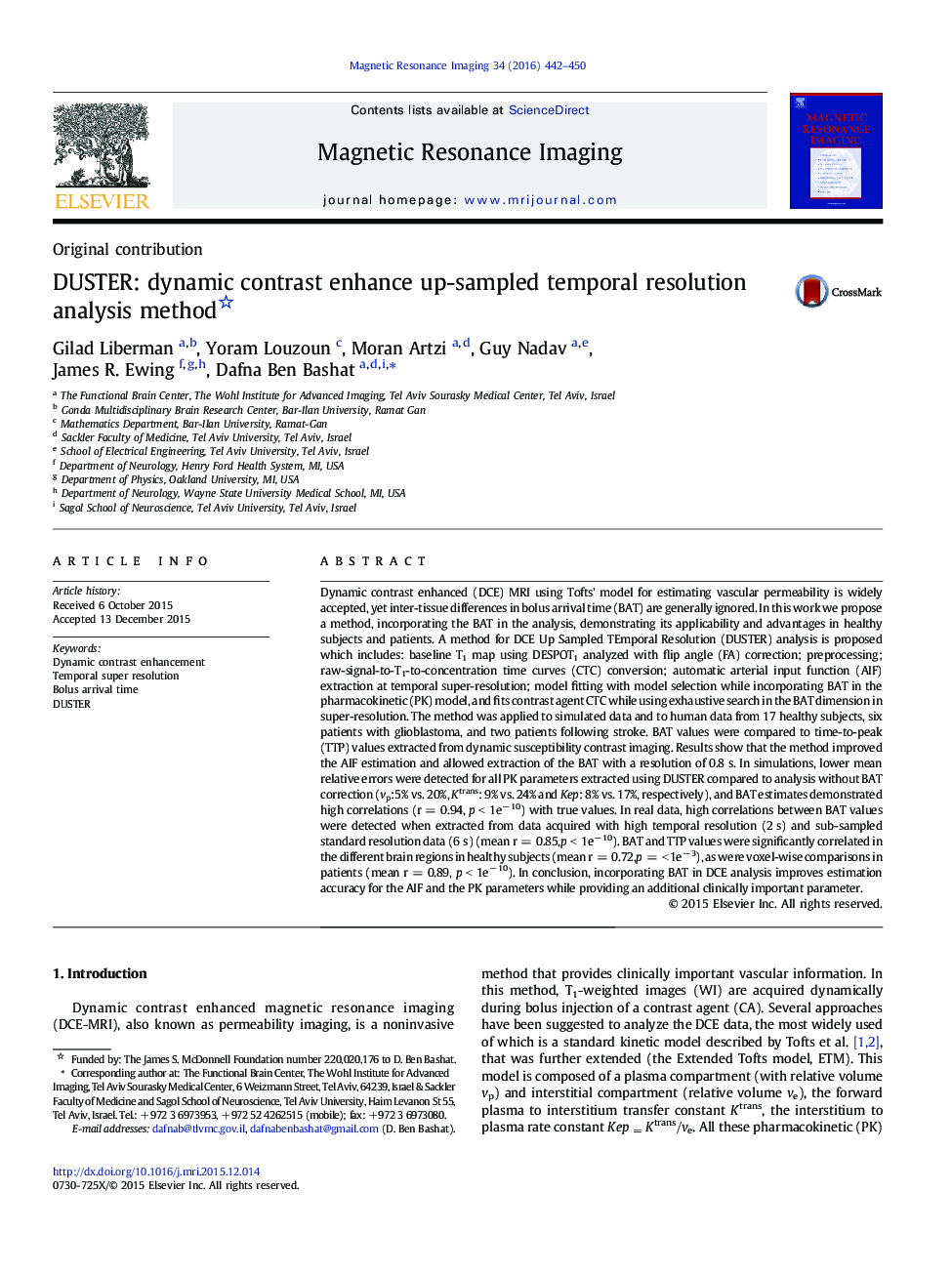| Article ID | Journal | Published Year | Pages | File Type |
|---|---|---|---|---|
| 10712386 | Magnetic Resonance Imaging | 2016 | 9 Pages |
Abstract
Dynamic contrast enhanced (DCE) MRI using Tofts' model for estimating vascular permeability is widely accepted, yet inter-tissue differences in bolus arrival time (BAT) are generally ignored. In this work we propose a method, incorporating the BAT in the analysis, demonstrating its applicability and advantages in healthy subjects and patients. A method for DCE Up Sampled TEmporal Resolution (DUSTER) analysis is proposed which includes: baseline T1 map using DESPOT1 analyzed with flip angle (FA) correction; preprocessing; raw-signal-to-T1-to-concentration time curves (CTC) conversion; automatic arterial input function (AIF) extraction at temporal super-resolution; model fitting with model selection while incorporating BAT in the pharmacokinetic (PK) model, and fits contrast agent CTC while using exhaustive search in the BAT dimension in super-resolution. The method was applied to simulated data and to human data from 17 healthy subjects, six patients with glioblastoma, and two patients following stroke. BAT values were compared to time-to-peak (TTP) values extracted from dynamic susceptibility contrast imaging. Results show that the method improved the AIF estimation and allowed extraction of the BAT with a resolution of 0.8 s. In simulations, lower mean relative errors were detected for all PK parameters extracted using DUSTER compared to analysis without BAT correction (vp:5% vs. 20%, Ktrans: 9% vs. 24% and Kep: 8% vs. 17%, respectively), and BAT estimates demonstrated high correlations (r = 0.94, p < 1eâ 10) with true values. In real data, high correlations between BAT values were detected when extracted from data acquired with high temporal resolution (2 s) and sub-sampled standard resolution data (6 s) (mean r = 0.85,p < 1eâ 10). BAT and TTP values were significantly correlated in the different brain regions in healthy subjects (mean r = 0.72,p = < 1eâ 3), as were voxel-wise comparisons in patients (mean r = 0.89, p < 1eâ 10). In conclusion, incorporating BAT in DCE analysis improves estimation accuracy for the AIF and the PK parameters while providing an additional clinically important parameter.
Related Topics
Physical Sciences and Engineering
Physics and Astronomy
Condensed Matter Physics
Authors
Gilad Liberman, Yoram Louzoun, Moran Artzi, Guy Nadav, James R. Ewing, Dafna Ben Bashat,
